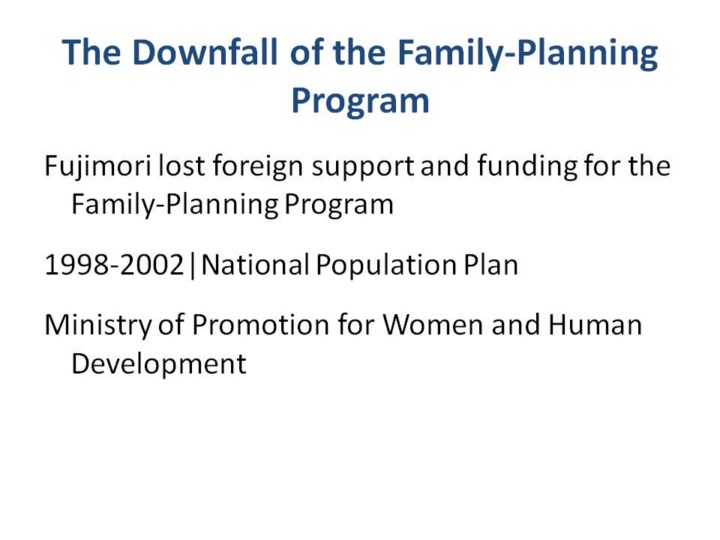| front |1 |2 |3 |4 |5 |6 |7 |8 |9 |10 |11 |12 |13 |14 |15 |16 |17 |18 |19 |20 |21 |22 |23 |24 |25 |26 |27 |28 |29 |30 |31 |32 |33 |34 |35 |36 |37 |38 |39 |40 |41 |42 |43 |44 |45 |46 |47 |48 |49 |review |
 |
The “family-planning program” lost support from foreign aid as well as feminist organizations when the evidence arose that the government was targeting poor, indigenous women in rural areas for forced sterilization.
The Catholic Church also used this opportunity to call for the end of all family-planning programs executed by the government and condemn the practice of sterilization.
In response, the government created a new National Population Plan for 1998-2002 where no target fertility rate was specified.
In addition, the Ministry of Promotion for Women and Human Development was created to implement the National Population Plan along with the National Coordination Commission composed of non-governmental organizations, Government officials, and foreign aid organizations.
Despite the new Population Plan, Fujimori could not escape critics. As more and more evidence was realized, it became clear that while Fujimori was presenting a feminist front sympathetic to the plight of the poor, he was in fact using sterilization to oppress impoverished women in the name of development.,
In retrospect, former president of the Population Council in 1996 Carlos Amburu commented, “Fujimori’s radical methods showed his personal interest in decreasing population growth through the most cost-effective method, sterilizations.” |